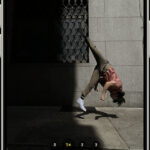The allure of capturing a solar eclipse is undeniable. As the moon gracefully glides in front of the sun, casting an eerie twilight upon the Earth, the urge to document this celestial spectacle is strong. But a common question arises for anyone with a camera in hand, especially a smartphone: “Can I actually take a photo of the eclipse, and will it damage my camera?”
Let’s address the primary concern head-on: radiation damage. The good news is that the fear of your smartphone or digital camera instantly frying from eclipse radiation is largely a myth. The sun’s radiation during an eclipse isn’t fundamentally different from any other sunny day. It’s still just regular sunlight. Concerns about prolonged exposure harming sensor chips were more relevant with older technology. Modern digital sensors, including those in smartphones and compact cameras, are quite robust. Even NASA acknowledges that smartphone camera damage from brief eclipse photography is unlikely. Videoing the entire period of totality (which is usually just a few minutes at most) is not expected to harm your device.
However, while your camera might be safe from “radiation damage” in the common misconception sense, there’s a very real reason why simply pointing and shooting at an eclipse without proper preparation will result in disappointing, if not completely blank, images. This boils down to sensor bloom and saturation.
Imagine trying to take a picture of a lightbulb in a dark room without adjusting your camera settings. The result would be a washed-out, overexposed blob of light, devoid of detail. The same principle applies to the sun, even during a partial eclipse. Without a filter, the intense sunlight, even when partially obscured, will overwhelm your camera’s sensor. This leads to sensor bloom, where light spills over from overexposed pixels to adjacent ones, and saturation, where the sensor is simply overloaded with light information. The outcome is a picture that is just a bright white or featureless image, not a recognizable eclipse. This holds true for snapshots, videos, or any type of photography.
Even during a significant partial eclipse, the sunlight is still too intense for commercial digital camera sensors to capture detail effectively without protection. There is a brief window of opportunity for unfiltered photography, and that’s during totality. When the moon completely blocks the sun’s bright face, and only the faint solar corona is visible, you can briefly remove your solar filter to capture this breathtaking phenomenon. However, this period of totality is fleeting, often lasting only a couple of minutes.
So, can you take a photo of the eclipse? Absolutely, but to get a useful and recognizable photograph, and to ensure you’re capturing the eclipse and not just sensor overload, you need to manage the intense sunlight. Just as you would need a polarizing filter or a specialized lens to photograph the sun on any normal day, you require a solar filter for eclipse photography. This filter acts like sunglasses for your camera, reducing the intensity of the sunlight reaching the sensor, allowing you to capture details of the eclipse.
In conclusion, while the fear of “radiation damage” to your camera is overstated for modern devices during brief eclipse photography, the challenge lies in capturing a meaningful image. Without a solar filter, you’ll likely end up with overexposed, featureless photos. By understanding the need for solar filters and using them correctly, you can safely and effectively photograph the eclipse, capturing this awe-inspiring celestial event. Remember to also use proper eye protection when viewing an eclipse directly!
